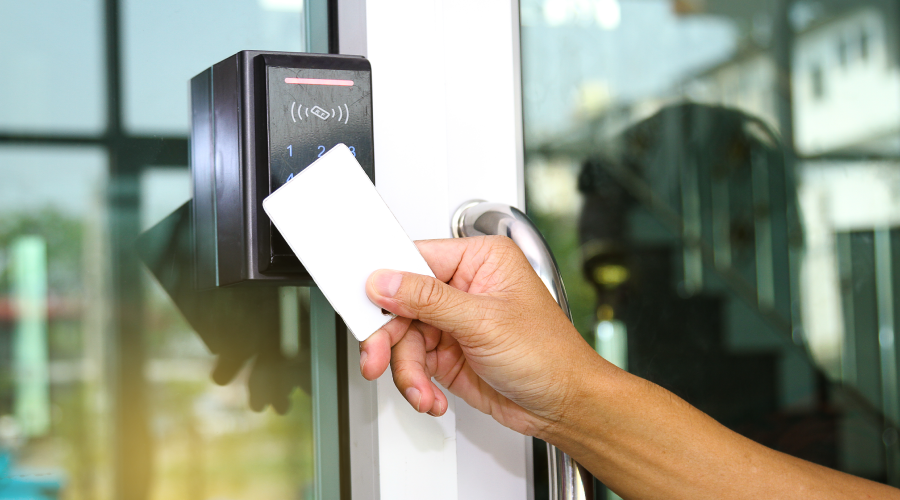Security Considerations for Door Hardware Retrofits
Upgrades to doors and door hardware also need to strike a careful balance between ease of entry and egress and the security and safety of occupants and assets.
For example, retrofits that incorporate interchangeable core technology can help to upgrade security by replacing an interchangeable core with a master key. Then, issuing new keys and recording the location and new key holders in the department's database completes the process. Periodically changing lock cores, rather than the whole lock, is one low-cost way to ensure overdue or lost keys do not become a security issue.
Among the lessons from the 2012 school shooting at Sandy Hook Elementary School is the importance of assessing a facility's physical security. Delaying the entry of a gunman saves lives. High-security facilities use floor-to-ceiling turnstiles at entry points inside the outer entry doors and control them remotely. They are locked to prevent unauthorized entry and controlled by personnel behind bulletproof glass.
Several exit-device options can help managers enhance security. They include: a kit that fills the gap between an exit device and door to prevent wrapping chains around the device and locking people in or out; electrified latch-bolt retraction for specific periods; egress-delay sounds and alarm sounds that occur when anyone attempts a forced entry or exit; a combination audio/visual alert package that guides occupants to exit locations; and luminescent signage on exit devices that increases visibility of the exit location in dark or smoke-filled areas.
Bottom-Line Issues
One essential element of planning upgrades is understanding the performance lives of installed components and planning for their replacement. Managers can use this information on a product's certified life cycles, as well as knowledge gained from experience, to develop spreadsheets showing a facility's major doors and hardware components, typical life span, date of installation, and replacement year and cost. After finishing the spreadsheet, they can add the costs for all components requiring replacement in a given year for each year over the next 20 to 30 years.
These yearly totals are the amounts that must be available each year for replacement or retrofit. This approach helps managers avoid the panicked, last-minute search for funds to perform necessary maintenance, and it avoids borrowing from reserves set aside for other purposes.
Related Topics:













